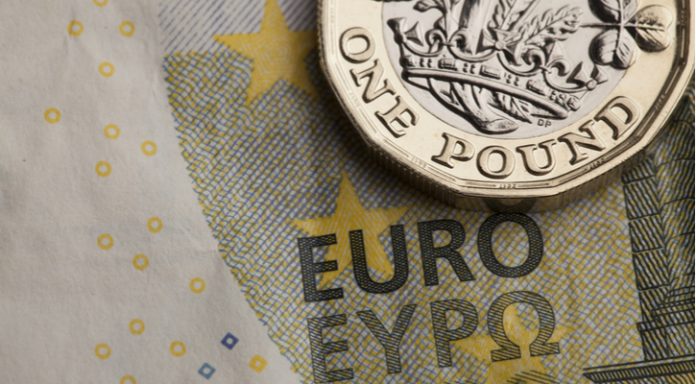- Pound (GBP) strength from the previous session fades amid Brexit concerns and Leicester lockdown
- UK manufacturing activity data expected to show a return to expansion at 50.1 in June.
- Euro (EUR) advancing ahead of manufacturing PMI and German retail sales and unemployment.
- Pound Euro exchange rate (GBP/EUR) trades -0.15% at €1.1018
The Pound settled 0.9% higher versus the Euro on Tuesday at €1.1040 after Boris Johnson pledged to spend heavily to get the UK economy bouncing back.
At 05:15 UTC, GBP/EUR is slipping back towards the key psychological level of €1.10 as investors look ahead to a slew of data, whilst Brexit fears drag on the Pound.
The Pound is trading lower after comments by EU Chief Negotiator Michel Barnier who accused the UK of making unacceptable demands on financial services. The comments highlight the distance that still remains between the two sides, even as the UK calls for a deal to be outlined by the end of July
Coronavirus concerns still linger as Leicester became the first city to be ordered back into lockdown, due to rapidly rising covid-19 cases. Overall, the picture is improving but at a frustratingly slow rate, as the daily coronavirus death rate dropped 10% over the past week.
Today attention will turn to UK manufacturing pmi which is expected to confirm the preliminary reading for June of 50.1. The figure 50 separates expansion from contraction.
Euro investors are also looking ahead to Eurozone and German manufacturing PMI readings. Expectations are for these to show a small contraction, printing at 44.9 for Germany and 46.7 in the Eurozone.
Other data from Germany, the Eurozone’s largest economy such as retail sales and unemployment will also be closely eyed for further clues over the health of the German economy as lockdown measures continue to ease.
Analysts anticipate that German retail sales rebounded +3.9% in May month on month as shops started trading again. Retail sales dropped -5.3% in April. Expectations are that the unemployment rate will only tick marginally higher from 6.3% to 6.6% as the government continues to offer support to the labour market.





